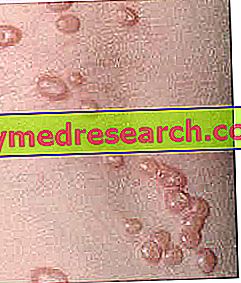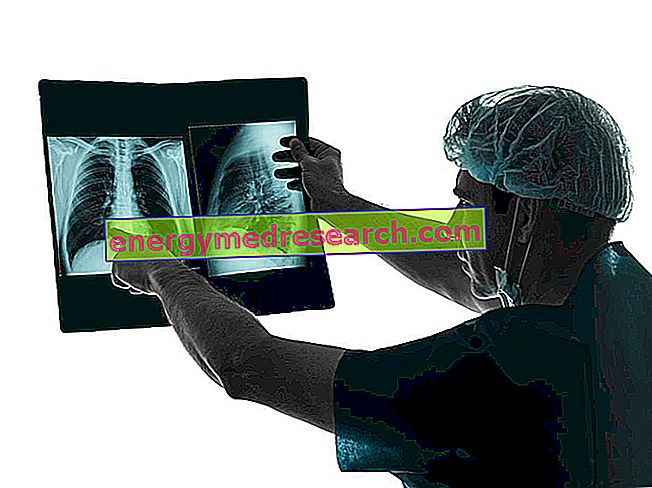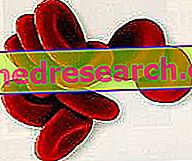Introduction
The contagious mollusc is an infectious disease with a viral etiology that affects the skin and, in some circumstances, the mucous membranes. Although it is a benign disease, the contagious mollusk must always be kept under control: for this purpose, a differential diagnosis with pathologies characterized by similar lesions is necessary, also useful for managing a possible - even if unlikely - malignant lesion transformation .

As we will analyze in the course of the article, the contagious mollusk must be treated with targeted medical devices, the same used for the treatment of warts. In some patients, especially those with AIDS, the disease is particularly difficult to eradicate: in similar situations, surgery or cauterization of the lesions is conceivable.
Diagnosis
In general, the diagnosis of the contagious mollusk is rather simple, and is based on direct medical observation of papular lesions.
When the diagnosis is uncertain, the suspicion of a contagious mollusc may be confirmed by tissue biopsy, a minimally invasive test that allows the lesion to be examined by electron microscope, thus tracing the cause.
The serological antibody test is not particularly reliable for the diagnosis of a contagious mollusc.
The differential diagnosis must be set with:
- Basal cell carcinoma (or basal cell carcinoma): probably the most common form of skin cancer.
- Keratoacanthoma: generally benign neoplasm, typical of the skin of the face and neck, characterized by the formation of papular lesions similar to nodules in relief, superimposable to those of the molluscum contagiosum.
- Herpetiform dermatitis: skin irritation phenomenon, characterized by the formation of serous bubbles and redness, sometimes indistinguishable from molluscum contagious lesions.
- Viral skin infections: Herpes simplex infections, chicken pox and warts.
- Lichen planus: chronic inflammatory erythematous lesion, of immunological character, involving skin and mucous membranes. This disease is also characterized by the formation of papular lesions similar to that of the contagious mollusk.
- Milia: small bumps or yellowish cysts that grow on the skin surface.
- Snows: well-circumscribed and evident skin patches, often in relief.
- Fibrous papules of the face: a common neoformation that appears as a solitary skin lesion, with dimensions equal to or less than 5 mm.
Medications and treatments
Although the contagious mollusk tends to regress spontaneously, most dermatologists still recommend treating the disease, to avoid the spread of the virus and speed up healing times. We remember, in fact, that the spontaneous resolution of papular lesions can require very long waiting times: some patients recover completely after a couple of months, while for others it takes even some years.
The treatment aimed at eliminating the contagious mollusk is comparable to that for the treatment of warts.
The contagious mollusc may be treated with specific drugs or removed by alternative surgical / therapeutic strategies.
AIDS patients also affected by the contagious mollusc are generally subjected to more aggressive treatment, since the lesions struggle to regress either spontaneously or with the application of drugs.
PHARMACOLOGICAL THERAPY
The application of drugs directly on the lesion is a discreet solution to the problem, aimed at shortening the waiting time for healing. The most used drugs in therapy are:
- Salicylic acid: keratolytic drug
- Potassium hydrochloride (astringent agent)
- Antiviral / immunosuppressive drugs (eg Imiquimod)
- Tretinonin or retinoic acid: the drug exerts keratolytic properties, favoring cell renewal. DO NOT under the sun during retinoid treatment. DO NOT take the drug during pregnancy and lactation: the active ingredient is a teratogen.
MEDICAL TREATMENTS
Drugs do not always resolve papular molluscan contagious lesions quickly: for particularly aggressive forms, specific medical interventions are recommended.
The most used methods for the contagious mollusc are:
- Scraping of the lesion (after superficial anesthesia of the area, with local anesthetics)
- Cryotherapy (cold therapy): it uses liquid nitrogen to "burn" the papular lesions of the contagious mollusc. Cryotherapy can cause pain, swelling and hypersensitivity where it is performed. Its effectiveness for the treatment of the contagious mollusk is comparable to that exercised by salicylic acid (topical application).
- Laser therapy
- Discoloration with specific chemical agents (eg benzoyl peroxide)
We recall that surgical removal of molluscum contagious lesions can leave indelible scars on the skin.
Contagious mollusc infections can recur, even after completing a specific course of treatment. To minimize the risk of recurrence, it is recommended to start treatment for the contagious mollusk when the lesions are still in the first stage, therefore few and small.



